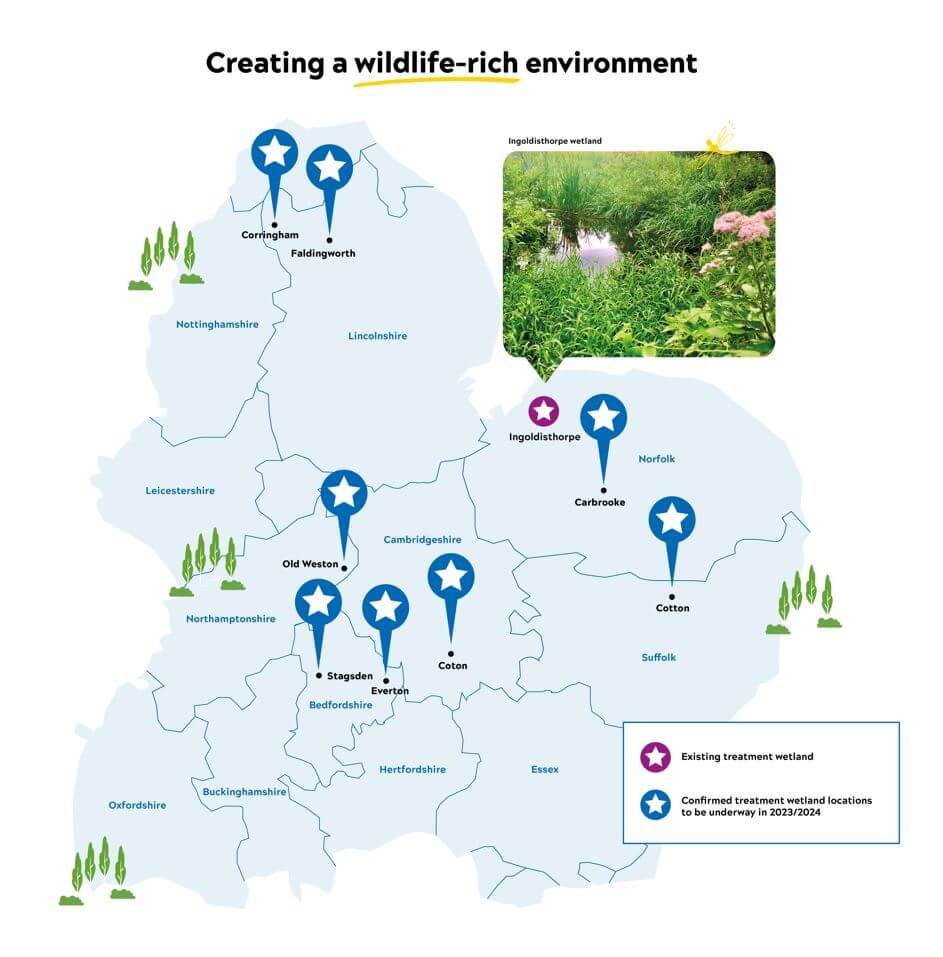{{selectedAlertBand.alertDescription}}
{{selectedAlertBand.incident.heading}}
Message last updated - Saturday 20th December 2025
{{selectedAlertBand.incident.heading}}
Message last updated - Saturday 20th December 2025
Message last updated - Saturday 20th December 2025
{{selectedAlertBand.alertLinkText}} {{selectedAlertBand.alertLinkText}}
For further updates subscribe
As the fastest growing region in the UK, we recycle a lot of water. In fact, we recycle over a billion litres of sewage every day! But did you know we also clean water using nature?
We’re always exploring new ways to help the environment, wildlife and habitats. That’s why we’re investing £50 million in wetlands between now and the end of the decade, as part of our commitment to Get River Positive.
What are Wetlands?
Wetlands are a low-cost, natural solution to water recycling. An acre of wetland can clean around 700,000 litres of water a day, before returning it back to our rivers.
What are wetlands?
Wetland success at Ingoldisthorpe
Back in 2018, we unveiled our flagship Wetland in Ingoldisthorpe. It was created in partnership with Norfolk River’s Trust, and it was actually the first of its kind in England.
The site naturally cleans 1.4 million litres of water a day. Treated water passes from our recycling centre to the wetland to be filtered even more, and gets cleaned by the wetland plants before it’s returned to the River Ingol.
We know wetlands work. And with the impacts of climate change, we need to make sure our region has the best resilience. That’s why we’re working towards 26 new wetlands by 2030!

Combatting carbon emissions
Wetlands are a low carbon method of treating used water. Even better, the plants in our wetlands filter water naturally, to make sure it’s of an even higher standard. By creating 26 new wetlands between now and the end of the decade, we’ll reduce the need for more expensive, higher carbon treatment methods. Find out more about our journey to reduce carbon emissions.
Enhancing our ecosystems
Did you know that 40% of the worlds plants and animals depend on wetlands? These unique ecosystems are havens for thousands of species of bugs, birds, and biodiversity.
Wetlands are a sanctuary where wildlife can thrive. And every year 200 new species, such as birds, amphibians, bats, water voles and more, are discovered in freshwater wetlands. This benefit to wildlife and habitats is why we’re investing £50 million between now and 2030 to create 26 new wetlands across our region. Read more about how we’re enhancing river biodiversity here.
Protecting against floods
Wetlands are a natural flood defence. Climate change, a fast-growing population and the paving of green spaces is putting additional pressure on our sewerage network. We’re tackling some of that pressure by investing in 26 new wetlands between now and the end of the decade.
Wetlands store lots of water from rain, overflows from riverbanks and general surface water. By storing all this water, the wetlands can slow the speed that water re-enters rivers, which reduces the chance of flooding downstream. Better yet, they’re a completely natural, low carbon solution – and cost effective too. Learn more about how we’re reducing the risk of flooding.